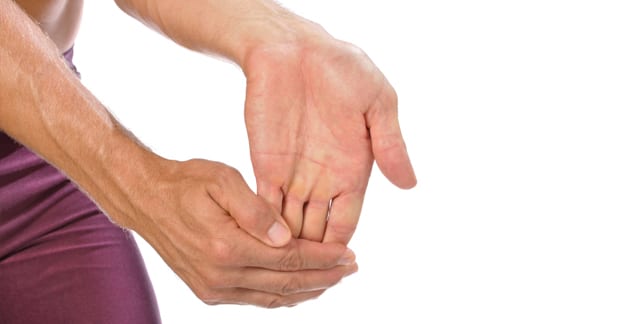Carpal tunnel syndrome (CTS) is a condition characterized by numbness, tingling, and/or pain located on the palm side of the wrist, hand, and into the index, third, and half of the ring finger. It’s caused by pressure exerted on the median nerve as it passes through the “tunnel” located in the wrist. The “floor” of the tunnel is a ligament while the “walls” are made up of eight small carpal bones that lock together in the shape of a tunnel. There are nine tendons (tendons attach muscles to bones allowing us to move our fingers), sheaths covering the tendons, blood vessels, and the median nerve that ALL travel through the tunnel, so it’s packed pretty tight. ANYTHING that increases the size of any of these structures or anything “extra” that shouldn’t be there can increase the pressure inside the tunnel, pinch the median nerve, and result in the classic numbness/tingling symptoms that wake people up at night, or interfere with work or driving.
In the Unites States (US), about 1 out of 20 people will develop CTS. Caucasians have the highest incidence rate and women are affected more than men by a 3:1 ratio between ages of 45-60 years old. Only 10% of the reported cases of CTS are individuals under 30 years old. Occupational CTS (as of 2010) affects 8% of US workers with 24% attributed to manufacturing industry jobs. This equates to approximately 3.1 million cases of work-related CTS in 2010. The risk of developing CTS increases with age, diabetes, hypothyroid, pregnancy, taking birth control pills, having an inflammatory arthritis, being obese, pinched nerves in the neck, thoracic outlet, elbow, and others. Therefore, managing CTS requires a thorough evaluation in order to assure accuracy in the diagnosis. With this background information, let’s look at the question, WHAT CAN YOU DO TO HELP CTS? One answer is, don’t age—good luck with that! In addition to keeping your weight under control, exercise can be VERY effective and YOU can be in charge of that process, but your first need to learn the exercises.
- The Carpal Stretch (“nerve gliding”): Place your palm on the wall near shoulder height with the fingers pointing down at the floor and press the palm of the hand flat on the wall. Lastly, reach across with the opposite hand and pull your thumb back off of the wall and hold for 5-15 seconds.
- The Wrist Extensor Stretch: Do the same as #1 but place the back of the hand on the wall in front of you, again fingers pointing downward. Here, there is no need to stretch the thumb.
- The “Bear Claw”: Make a fist and then open up the hand. Keep the small finger joints flexed while extending the knuckles at the base of each finger straight (not bent). Repeat 5-10x.
- Putty Squeeze: Simply squeeze putty in your hand for two to five minutes until fatigued.
- Yoga has been shown to reduce pain and improve grip strength in CTS patients!
Now the question, “…can these exercises prevent surgery?” The answer is “maybe.” They certainly help in some cases, but a multi-dimensional treatment plan is the BEST approach. This includes:
- Chiropractic manipulation of the hand, wrist, elbow, shoulder, and neck.
- Soft tissue “release” techniques of the muscles in the forearm, upper arm, shoulder, and neck.
- Cock-up wrist splint to be used at night, and in some cases, at times during the day.
- Ergonomic management of your workstation or situation (to minimize repetitive insult to the area).
- Nutritional support that may include an anti-inflammatory diet and nutrients (vitamins, minerals, herbs, etc.).
- Managing any contributing conditions like diabetes, hypothyroid, and/or the others. Here’s the GOOD NEWS: CHIROPRACTIC can manage these six steps, though some cases will require co-management with primary care and/or specialist.
